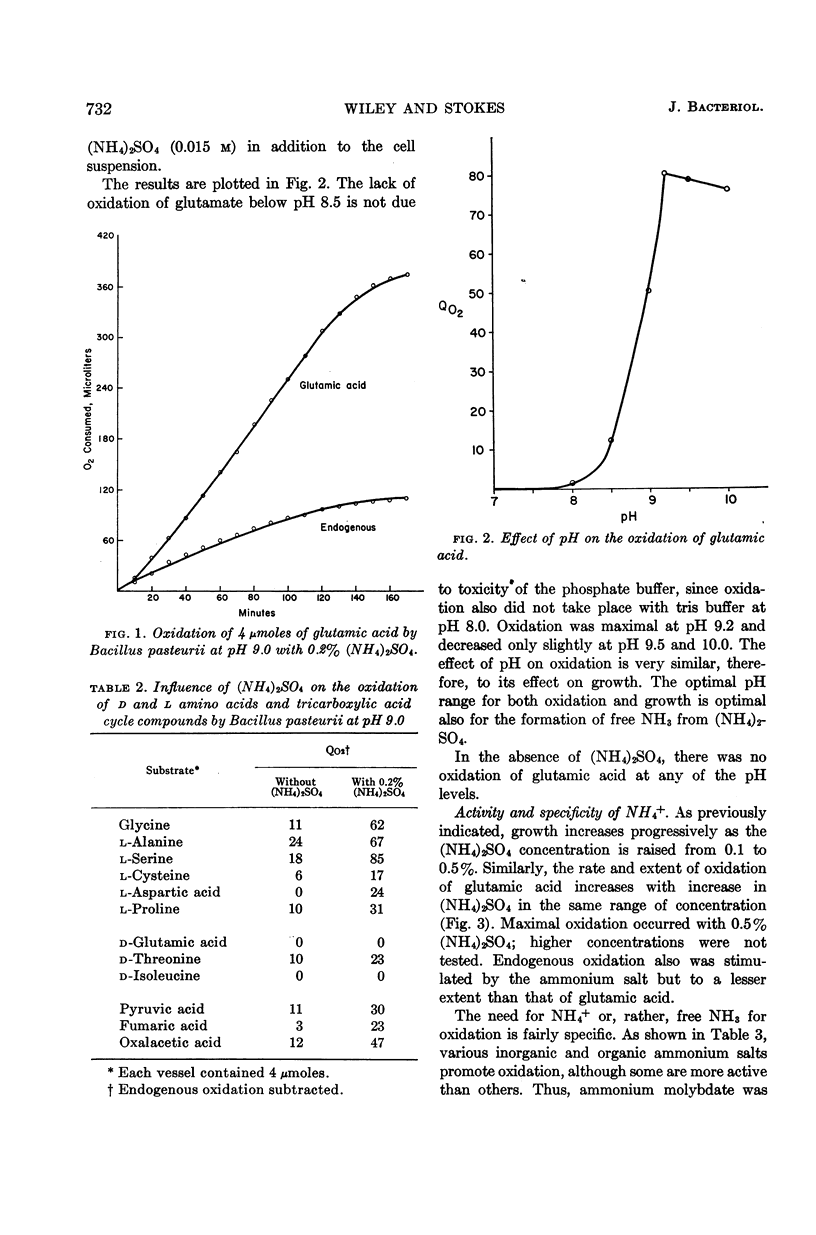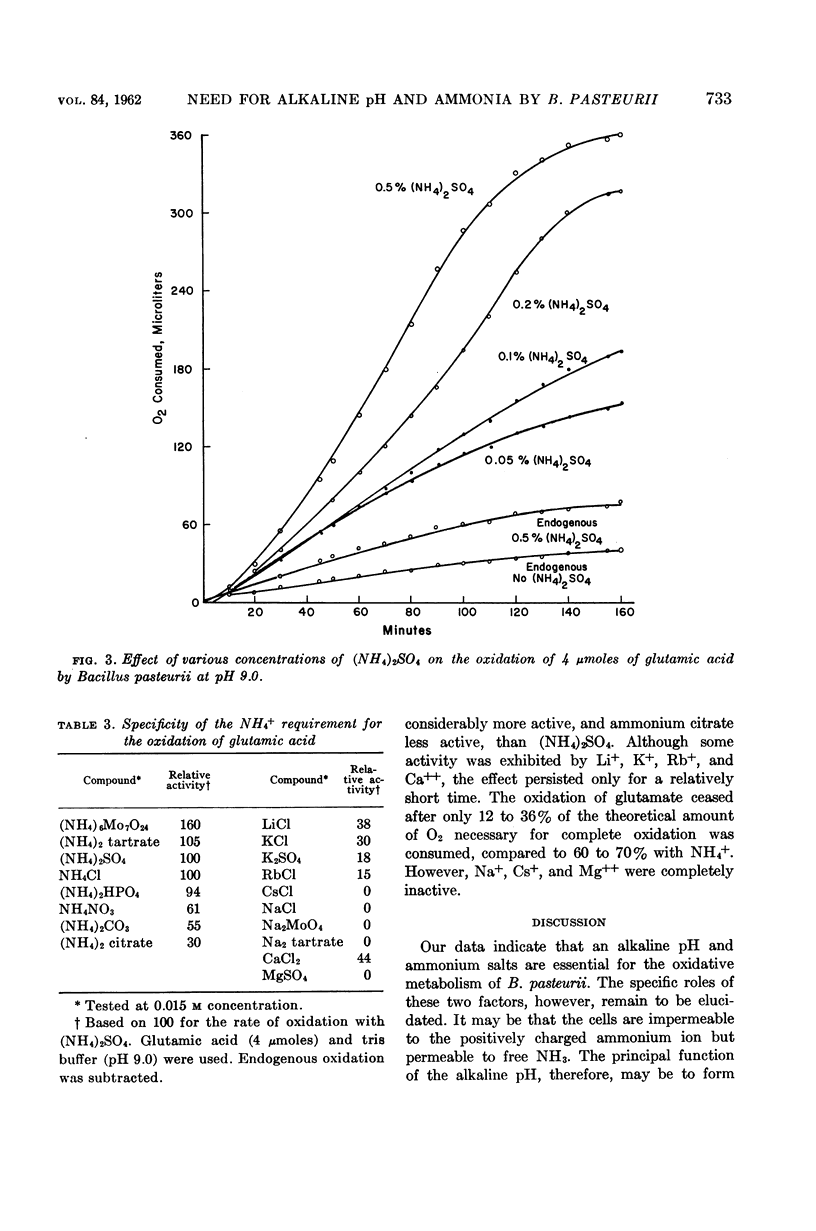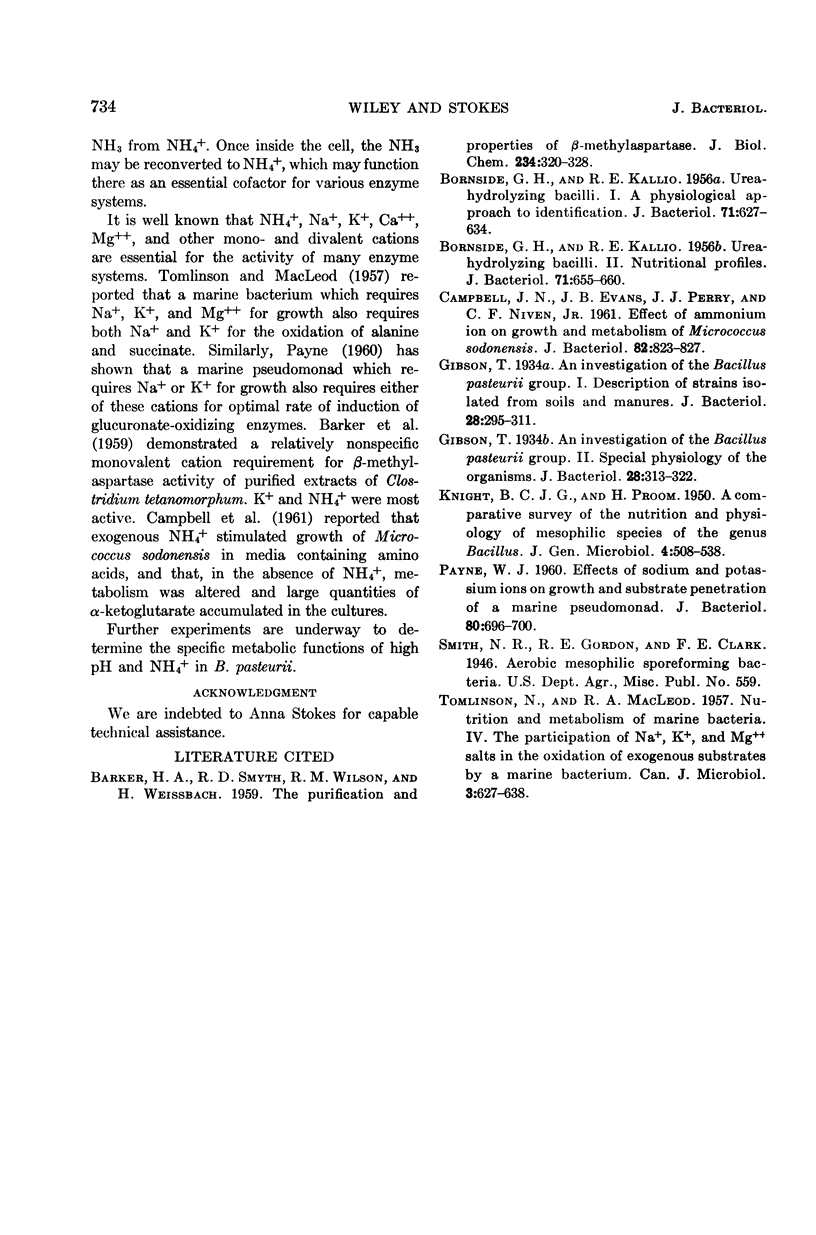Abstract
Wiley, W. R. (Washington State University, Pullman) and J. L. Stokes. Requirement of an alkaline pH and ammonia for substrate oxidation by Bacillus pasteurii. J. Bacteriol. 84:730–734. 1962—Resting-cell suspensions of Bacillus paseurii require a pH higher than 8.0 and also NH4+ for the oxidation of glycine, alanine, serine, glutamic acid, other amino acids, and compounds of the Krebs cycle. The optimal pH is 9.2. Maximal activity was obtained with 0.5% (NH4)2SO4, the highest concentration tested. NH4+ can be supplied by a number of inorganic and organic ammonium salts. The effect of NH4+ is fairly specific. It cannot be replaced by Na+, Cs+, and Mg++, and only partially replaced by Li+, K+, Rb+, and Ca++. Some possible metabolic functions of the required alkaline pH and NH4+ are discussed.
Full text
PDF




Selected References
These references are in PubMed. This may not be the complete list of references from this article.
- BARKER H. A., SMYTH R. D., WILSON R. M., WEISSBACH H. The purification and properties of beta-methylaspartase. J Biol Chem. 1959 Feb;234(2):320–328. [PubMed] [Google Scholar]
- BORNSIDE G. H., KALLIO R. E. Urea-hydrolyzing bacilli. I. A physiological approach to identification. J Bacteriol. 1956 Jun;71(6):627–634. doi: 10.1128/jb.71.6.627-634.1956. [DOI] [PMC free article] [PubMed] [Google Scholar]
- BORNSIDE G. H., KALLIO R. E. Urea-hydrolyzing bacilli. II. Nutritional profiles. J Bacteriol. 1956 Jun;71(6):655–660. doi: 10.1128/jb.71.6.655-660.1956. [DOI] [PMC free article] [PubMed] [Google Scholar]
- CAMPBELL J. N., EVANS J. B., PERRY J. J., NIVEN C. F., Jr Effect of ammonium ion on growth and metabolism of Micrococcus sodonensis. J Bacteriol. 1961 Dec;82:823–827. doi: 10.1128/jb.82.6.823-827.1961. [DOI] [PMC free article] [PubMed] [Google Scholar]
- Gibson T. An Investigation of the Bacillus Pasteuri Group: I. Description of Strains Isolated from Soils and Manures. J Bacteriol. 1934 Sep;28(3):295–311. doi: 10.1128/jb.28.3.295-311.1934. [DOI] [PMC free article] [PubMed] [Google Scholar]
- Gibson T. An Investigation of the Bacillus Pasteuri Group: II. Special Physiology of the Organisms. J Bacteriol. 1934 Sep;28(3):313–322. doi: 10.1128/jb.28.3.313-322.1934. [DOI] [PMC free article] [PubMed] [Google Scholar]
- KNIGHT B. C. J. G., PROOM H. A comparative survey of the nutrition and physiology of mesophilic species in the genus Bacillus. J Gen Microbiol. 1950 Sep;4(3):508–538. doi: 10.1099/00221287-4-3-508. [DOI] [PubMed] [Google Scholar]
- PAYNE W. J. Effects of sodium and potassium ions on growth and substrate penetration of a marine pseudomonad. J Bacteriol. 1960 Nov;80:696–700. doi: 10.1128/jb.80.5.696-700.1960. [DOI] [PMC free article] [PubMed] [Google Scholar]
- TOMLINSON N., MACLEOD R. A. Nutrition and metabolism of marine bacteria. IV. The participation of Na+, K+, and Mg++ salts in the oxidation of exogenous substrates by a marine bacterium. Can J Microbiol. 1957 Jun;3(4):627–638. doi: 10.1139/m57-068. [DOI] [PubMed] [Google Scholar]


